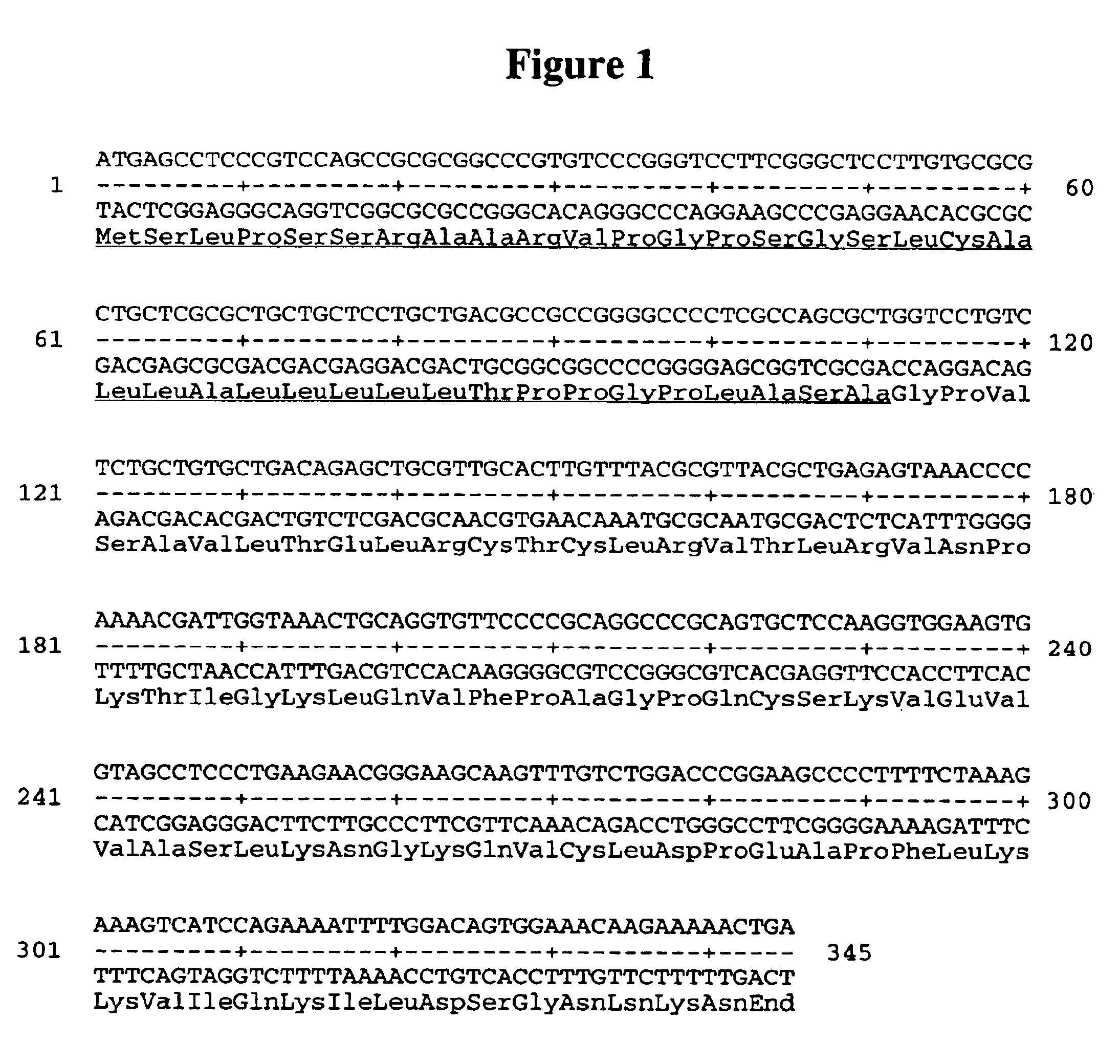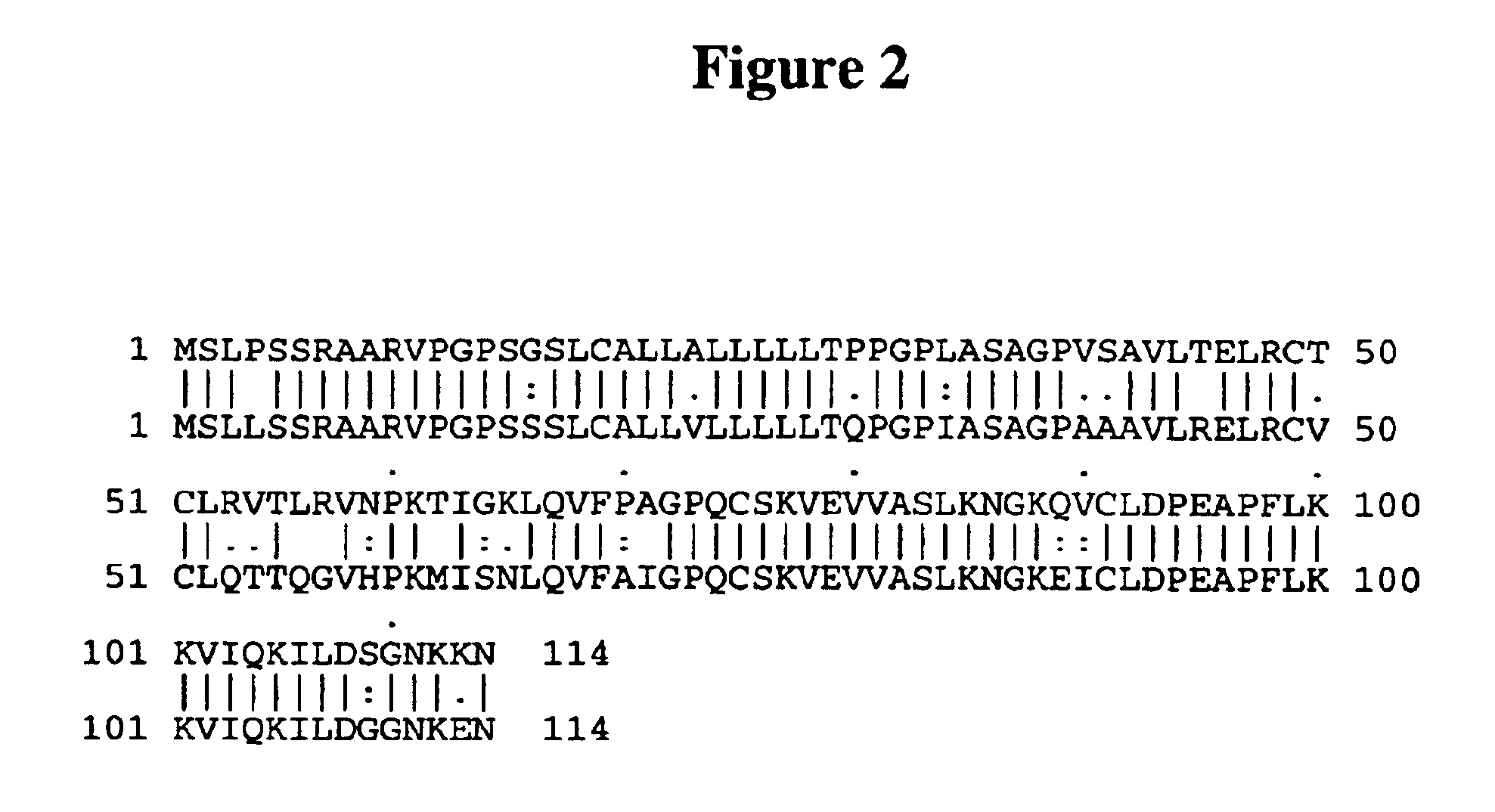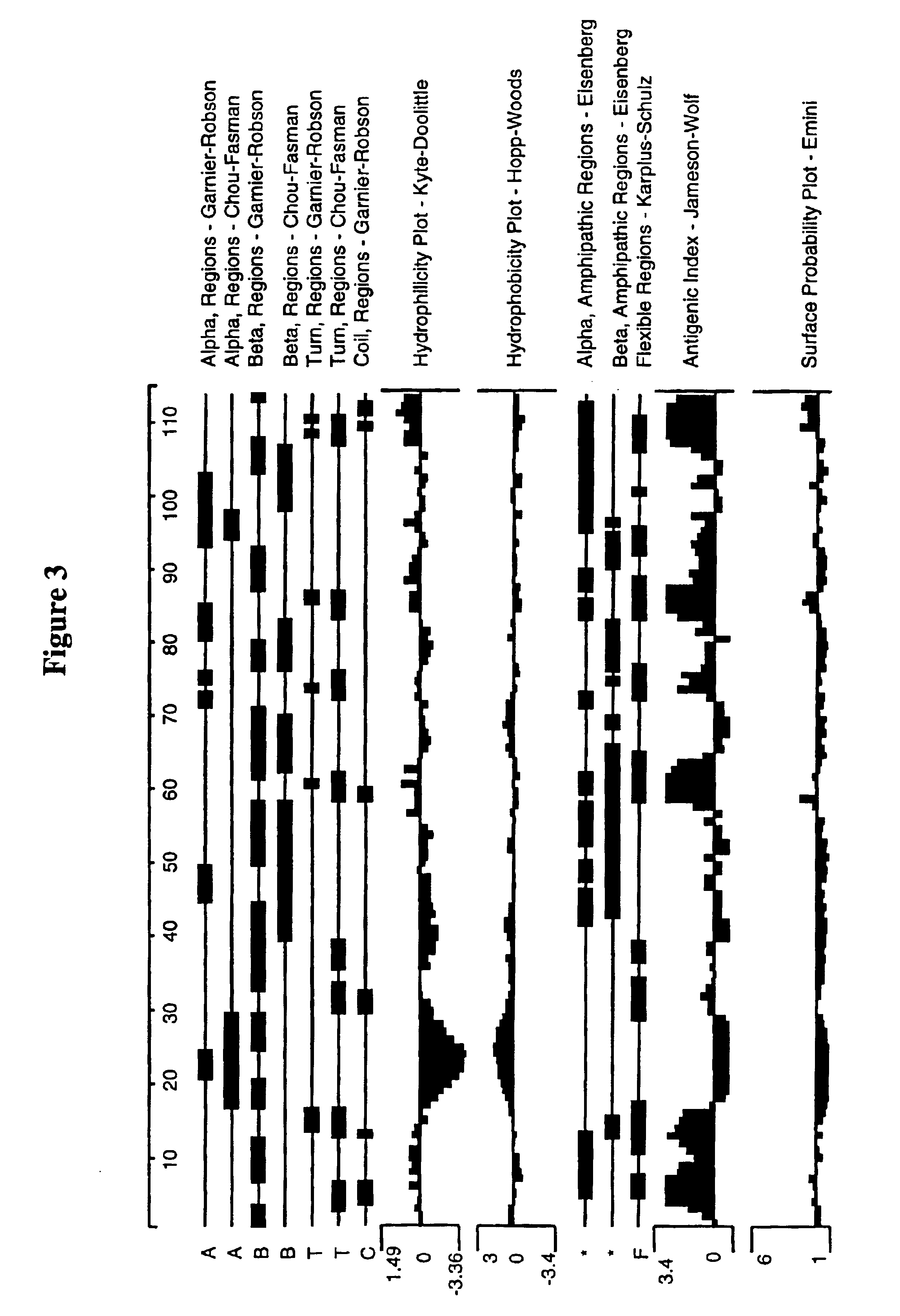Chemokine alpha 3
a technology of chemokine and alpha 3, applied in the field of chemokine alpha 3, can solve the problem of not being able to attach a precise role to the members of the branch, and achieve the effects of stimulating neutrophils, provoking chemotaxis and exocytosis
- Summary
- Abstract
- Description
- Claims
- Application Information
AI Technical Summary
Benefits of technology
Problems solved by technology
Method used
Image
Examples
example 1
Expression and Purification of Mature Human CKα-3 using Bacteria
[0245]The DNA sequence encoding human CKα-3 in the deposited polynucleotide is amplified using PCR oligonucleotide primers specific to the amino acid carboxyl terminal sequence of the human CKα-3 protein and to vector sequences 3′ to the gene. Additional nucleotides containing restriction sites to facilitate cloning are added to the 5′ and 3′ sequences respectively.
[0246]The 5′ oligonucleotide primer has the sequence 5′ CCCGCATGCGTCCTGTCTCTGCTGTGC 3′ (SEQ ID NO:3) containing the underlined Sph I restriction site, which encodes a start AUG, followed by 18 nucleotides of the human CKα-3 coding sequence set out in FIG. 1 (SEQ ID NO:1) beginning with the second base of the thirty-eighth codon.
[0247]The 3′ primer has the sequence 5′ CCGGATCCGTTTTTCTTGTTTCC 3′ (SEQ ID NO:4) containing the underlined BamHI restriction site followed by 15 nucleotides complementary to the last 15 nucleotides of the CKα-3 coding sequence set out ...
example 2
Cloning and Expression of Human CKα-3 in a Baculovirus Expression System
[0256]The cDNA sequence encoding the full length human CKα-3 protein, in the deposited clone is amplified using PCR oligonucleotide primers corresponding to the 5′ and 3′ sequences of the gene:
[0257]The 5′ primer has the sequence 5′ GCCGGATCCGCCATCATGAGCCTCCCGTCC 3′ (SEQ ID NO:5) containing the underlined BamHI restriction enzyme site followed by the first 15 bases of the sequence of CKα-3 of FIG. 1 (SEQ ID NO:1). Inserted into an expression vector, as described below, the 5′ end of the amplified fragment encoding human CKα-3 provides an efficient signal peptide. An efficient signal for initiation of translation in eukaryotic cells, as described by Kozak, M., J. Mol. Biol. 196: 947-950 (1987) is appropriately located in the primer portion of the construct.
[0258]The 3′ primer has the sequence 5′ GCGGGTACCTCAGTTTTTCTTGTTTCCACT 3′ (SEQ ID NO:6) containing the underlined Kpn I restriction site followed by nucleotide...
example 3
Expression of CKα-3 in COS Cells
[0268]The expression plasmid, CKα-3 HA, is made by cloning a cDNA encoding CKα-3 into the expression vector pcDNAI / Amp (which can be obtained from Invitrogen, Inc.).
[0269]The expression vector pcDNAI / amp contains: (1) an E.coli origin of replication effective for propagation in E. coli and other prokaryotic cell; (2) an ampicillin resistance gene for selection of plasmid-containing prokaryotic cells; (3) an SV40 origin of replication for propagation in eukaryotic cells; (4) a CMV promoter, a polylinker, an SV40 intron, and a polyadenylation signal arranged so that a cDNA conveniently can be placed under expression control of the CMV promoter and operably linked to the SV40 intron and the polyadenylation signal by means of restriction sites in the polylinker.
[0270]A DNA fragment encoding the entire CKα-3 precursor and a HA tag fused in frame to its 3′ end is cloned into the polylinker region of the vector so that recombinant protein expression is direc...
PUM
| Property | Measurement | Unit |
|---|---|---|
| optical density | aaaaa | aaaaa |
| optical density | aaaaa | aaaaa |
| concentration | aaaaa | aaaaa |
Abstract
Description
Claims
Application Information
 Login to View More
Login to View More - R&D
- Intellectual Property
- Life Sciences
- Materials
- Tech Scout
- Unparalleled Data Quality
- Higher Quality Content
- 60% Fewer Hallucinations
Browse by: Latest US Patents, China's latest patents, Technical Efficacy Thesaurus, Application Domain, Technology Topic, Popular Technical Reports.
© 2025 PatSnap. All rights reserved.Legal|Privacy policy|Modern Slavery Act Transparency Statement|Sitemap|About US| Contact US: help@patsnap.com



